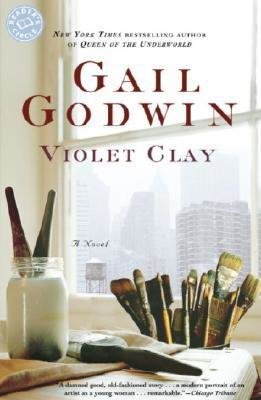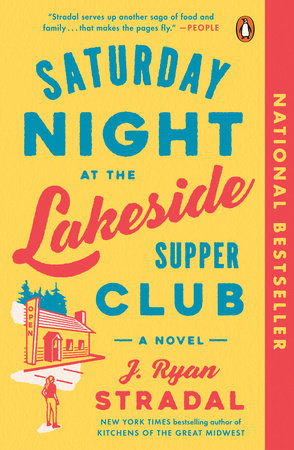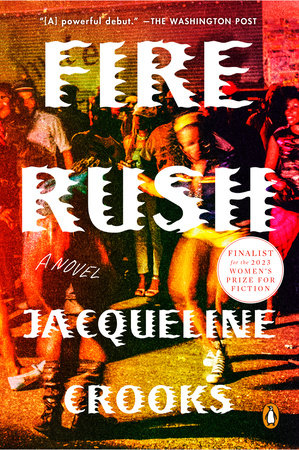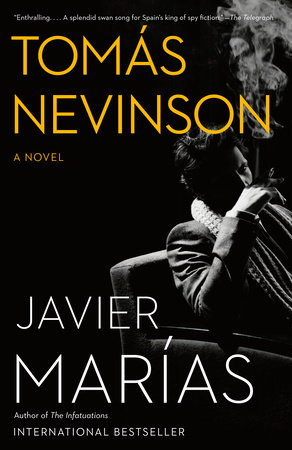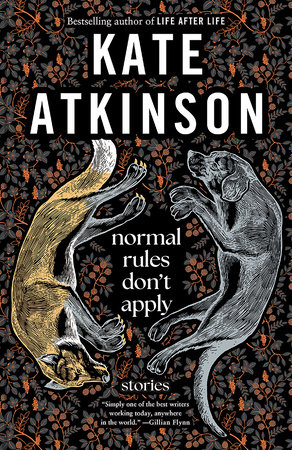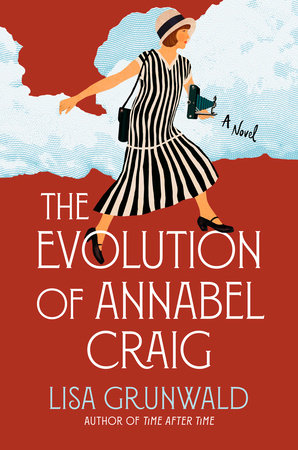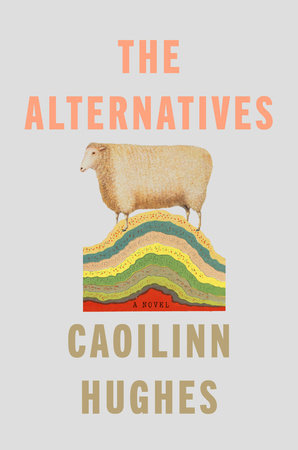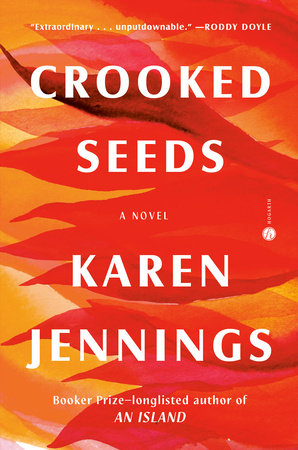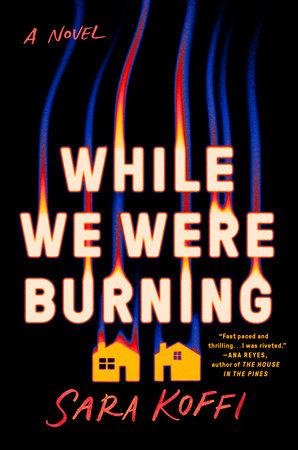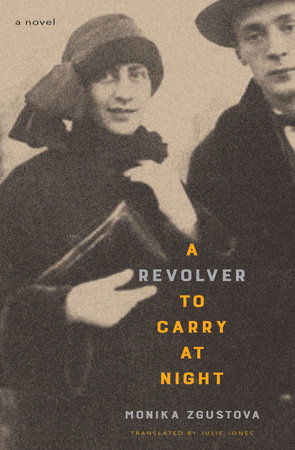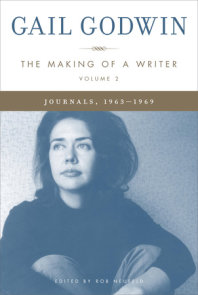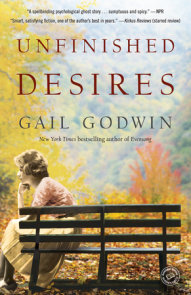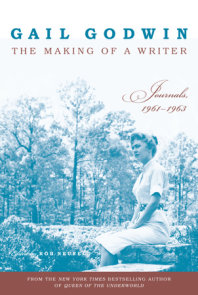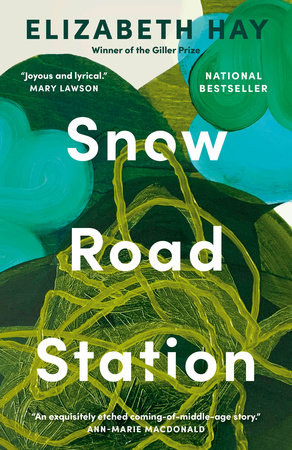Author Q&A
A Conversation with Gail Godwin
Rob Neufeld is the book reviewer for the Asheville Citizen-Times and the director of the Together We Read program in North Carolina. He has collaborated with Gail Godwin in editing her journals, published by Random House as The Making of a Writer.
Rob Neufeld: Violet Clay was published in 1977, but there had been many drafts. What is the story behind all those drafts?
Gail Godwin: I had more trouble with Violet Clay than with any other novel I’ve ever written and published because I got started wrong. I wanted to write a Gothic novel, yet for a while it was neither fish nor fowl. For the first time in my life, I wrote a blue paper–an assessment and scolding and cheering. I used the ploy, "Imagine this novel as finished. How would you like to see it discussed?" Bob Gottlieb [editor at Knopf] didn’t like the ending. I said, "I’m going to take it home and start it over." Each week, I would write a chapter and mark it up. I hired a typist–who became a good friend. He was an educated man and a careful reader. I’d make tea for him, and we’d discuss the novel. It’s many people’s favorite and was a finalist for the National Book Award. It’s dedicated to Robert [the late Robert Starer, classical composer and Gail’s longtime life partner]. He said, "You ought to dedicate the book to Ernest and Julio Gallo." He and I had spent many evenings discussing Violet and sipping our household wine.
RN: What trouble did you have with the book?
GG: I had started with the notion, "Aha! Now I will write a Gothic tale about a young woman." Then it kept turning into something else. The something else it was becoming–a Gail Godwin novel–emerged. In this novel, a heroine-in-progress deals with and sorts through her particular history, and realizes that there’s a deadline in her life. The Gothic elements stayed in, but the story became primarily an artist’s journey. And then Ambrose started intruding, and it was back to the father story again. [Godwin’s father had committed suicide. A character named Ambrose had been the protagonist’s father in an earlier, unpublished story.] When you’re a serious writer, it’s always the question of what is going to surge up and grab you by the hair. The story of the artist who has to achieve something before it’s too late seemed urgent. Then there was the story of the new Gothic becoming the realistic modern novel. There’s Doris Kolb, Violet’s art director, who started using close-up photos of female victims for her book covers. I was thinking, "How far can I go in representing the crass sadism that is appearing on our commercial horizon?"
RN: Did you have to establish a close relationship with Ambrose to write Violet Clay?
GG: Ambrose tells Violet, "You have to go through me, kid." The book became centered on the idea of someone having to go through someone else’s disappointment and failure in order to have a sense of that someone’s full self–to know the horror of failing one’s potential. You also need to know what fears people have. Ambrose wouldn’t face his fear. He kept segueing off into seducing people rather than engaging with his questions. The most poignant part was Violet’s discovery of the outline of his novel. He had been able to express what he couldn’t execute. His outline had some of the same hopes that my blue paper had.
RN: How did you come to choose New York as a setting?
GG: I wanted to romanticize New York. It had been a romantic figment for me, for I’d read about writers in New York. I spent a brief time there right before Iowa [Godwin enrolled in the Iowa Writer’s Workshop in 1967]. I was in New York, age 29, with nothing, looking for a job. One woman in personnel said, "You’re a little old to be right for a job that doesn’t require any experience." And yet, New York was so alive with possibilities. I finally got a job at the Saturday Evening Post as a fact-checker. I lived in a residence hotel and walked to work. Occasionally, someone would take me out to dinner. I was planning on going to Iowa, but I didn’t have the money. My friend Lorraine was there already. Then, a rich old aunt left me $5,000 as a punishment; it was far less than everybody else got, and off I went to Iowa!
RN: Making Violet an artist must have been exciting for you because you had once wanted to be an artist.
GG: About seven years ago, I went back to drawing because that’s what I used to do. I found it a great help to draw pictures of characters and scenes for the book that I was writing. In Evensong, I did a picture of the evangelist Grace Munger with her God; and one of Margaret [the protagonist, an Episcopal minister] with hers. [See Godwin’s website: www.gailgodwin .com.] Grace is having a face-to-face with God, and both are engulfed in flames. Margaret is sitting away from God. She’s small and there’s a shadow. It made me realize–and helped me make Margaret realize–that Grace had a fire and vitality and closeness that Margaret didn’t have.
RN: Color plays an important part in Violet Clay. How does color work for you?
GG: If I think of a word, I see a color in it. When I think of a scene in a book, it has a background color.
RN: Is that one of your special attributes, do you think?
GG: When I was little, my mother played a game with me called "Feathers." I’d lie on my stomach, and she’d make a design on my back and say, "What color is that?" I’d say, "Gray." She’d say, "Wrong–it’s beige."
RN: How did she know it was beige?
GG: Because that’s what she thought it was. It had partly to do with the intensity of the touch. A beige or gray would be feathery. Orange would be bristly. Robert [Starer] wrote two sets of pieces for colors–"Sketches in Color"–which are very popular with young piano students and that cover everything from aluminum to bright orange.
RN: Your mother fed her spirit into you.
GG: She was a young mother. She hadn’t really been ready to have me. She was highly intelligent and creative. The game was as much to keep her from being bored as to entertain me.
RN: Do you feel that you’re fulfilling yourself as an artist?
GG: Art is going to be the playmate of my old age. I’m not a professional artist. It’s a pastime that feeds my vocation. Seven or eight years ago, I started dreaming intensely about drawing and painting things. I would wake up and see what I’d done and copy it. I bought notebooks and colored pencils. I chose notebooks with recycled paper that had little impurities, and I would wait for some images to form. If I had gone the route of being trained as a professional, I would have been working during the heyday of abstract expressionism, which is not my interest.
RN: Violet likes the Romantic landscape painters Samuel Palmer, Frederick Church, Albert Ryder, and Thomas Cole.
GG: Yes, Samuel Palmer conjures up a fairy-tale environment.
RN: Let’s talk about drama. You mentioned Violet’s sense of a deadline in her life. Is that a characteristic drama in your fiction? Perhaps there should be an anthology of deadline stories.
GG: What a neat idea! There are deadlines in every aspect of life: career deadlines, physical deadlines, giving birth, final illnesses, and final exams–as in The Good Husband. One of the earliest sentences I wrote in Gull Key [Godwin’s first novel, unpublished] is one I still love: "Until, one fine orange afternoon, you would find yourself alone with the scoreboard and you would say: ‘I could have done so much more!’" I have so many people in my life who have missed deadlines or who didn’t recognize them as being deadlines.
RN: People get trapped in stories and are freed from them, like Violet. Do you still think about the myth of the new woman?
GG: My editor, Bob Gottlieb, wanted Violet Clay to be named Suspended Woman.
RN: This was just after you published The Odd Woman?
GG: Yes. The new woman was very much a lively concept then, but I think the new woman has come and gone. Girls have regressed. Every once in a while, people get in an uproar– such as when the president of Harvard [Larry Summers] says that women’s brains are not scientific. There had once been an ideal of what the new woman could be. . . . Young men today have gotten trapped in a different way of thinking. I have met on book tours, young men, roughly ages 24 to 38, who work as drivers. I’d be trapped in a car with them. They were all having a terrible time relating to women, and we’d talk about their quandaries. All the old power props are gone. From what I’ve gathered, the boys are in worse shape than the girls. They’re still trying to find a new form, whereas the girls are sharp and deadly, though their parents will tell me they’re self-conscious and fearful of criticism. . . . I don’t see the clear-cut heroes of Gothic novels anymore. I don’t think Mr. Rochester could exist today and be attractive to women.
RN: Ambrose is "El Primer Caballero."
GG: Ambrose couldn’t get away with being a noble, wounded man today. Look at the difference between the male movie stars now and Gary Cooper or Cary Grant. They’re different now. They’re beset men. Something is keeping them from rising to that old romantic stature. It had probably been something of an illusion, but it was one in which we all colluded. . . . I think Igot one of the last one of them in Robert.
RN: Evil people–such as Milo’s character, the murderous mother–turn out to be sympathetic in your novels. Minerva is paranoid about an escaped convict who doesn’t materialize. Men with pokers in Violet’s dream turn out to be fireplace cleaners. Do you believe there are such things as criminals?
GG: I certainly think so. There are people who are unredeemable. They choose to be destructive. The art director, Kolb, she’s in the process of using the destructive elements of life, putting them out there in the public eye. I need to write about destructive people more–as warnings. I want to touch upon their behavior without leaving the reader with specifics he wishes he had never envisioned.
RN: Redemption may be a hallmark of your writing. So is your narrative voice, I think–that confiding voice of someone opening a window on an intimate scene, knowing that your listener shares your wisdom. Are you conscious of that voice?
GG: When I hear that voice, I know I’ve gotten down to my real material. When I find my melody, it is intimate. Otherwise, I’m not interested. It’s a very straightforward here’s-what-I’m-trying-to-tell-you. Even when I was editing Queen of the Underworld [Godwin’s 2006 novel], I found places where I was writing to write good writing, and I just cut those "writerly" parts out. I wish I had cut out that last "writerly" paragraph in Violet Clay.
RN: You mean, "Meanwhile that limitless radiance . . ."?
GG: The novel should end with Violet painting something that has to do with living and perception. It should end with her painting, not the author showing off.
RN: Violet says that her worst demons are the ones who are in love with the appearance of work rather than the genuine art.
GG: Those are among my worst demons.
RN:You must feel an obligation to your characters to represent them genuinely.
GG: I work hard at showing rounded and complex representations of my characters. Since Violet Clay is told completely from Violet’s point of view, I had to provide people who knew her uncle Ambrose, those who adored him, were hurt by him, were critical of him. She had to incorporate their stories and add them to her own experience of her uncle. And then, to show what he had in him but couldn’t render artistically, I had to create his heartbreaking, brilliant outline for the unwritten novel that Violet finds after his death.
